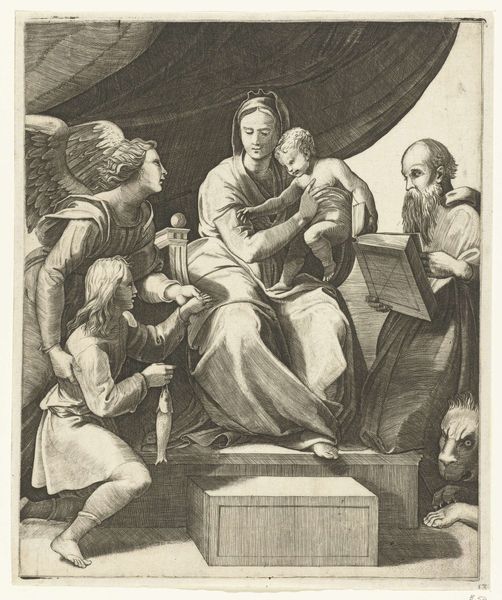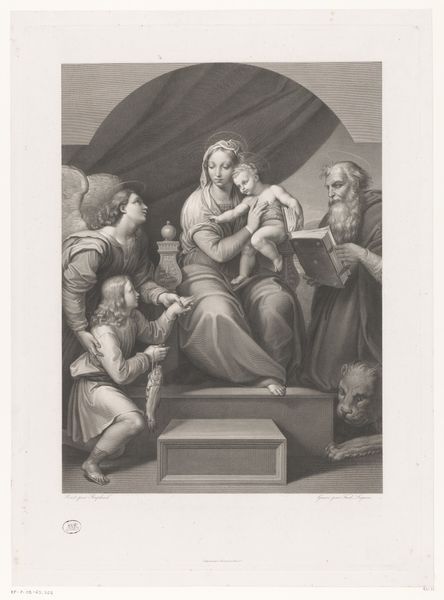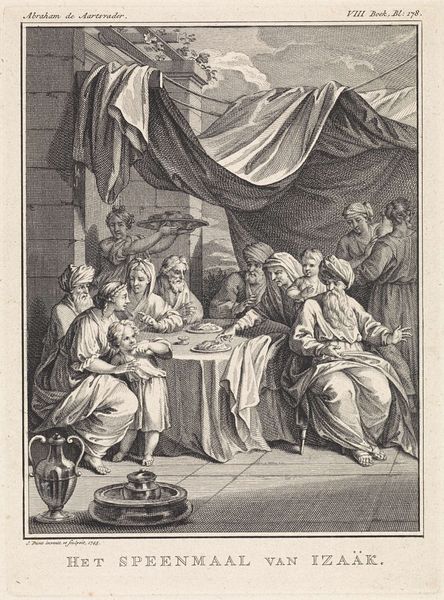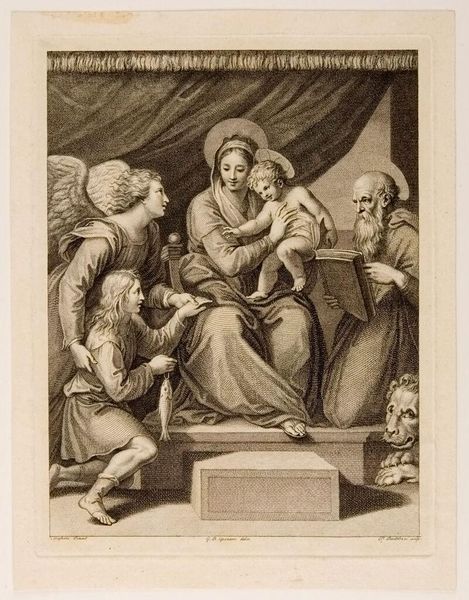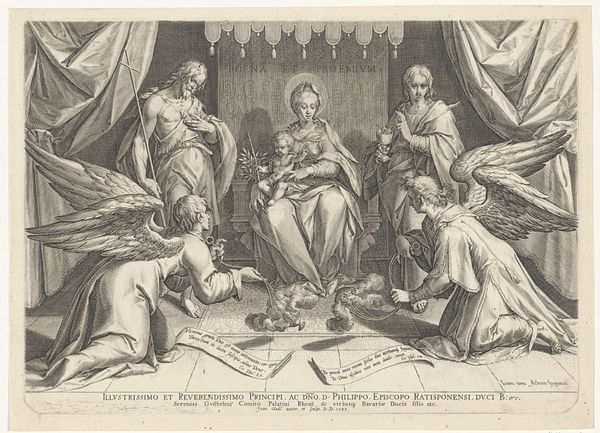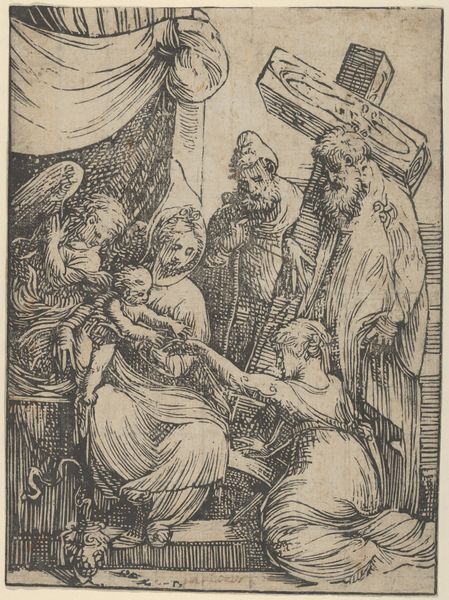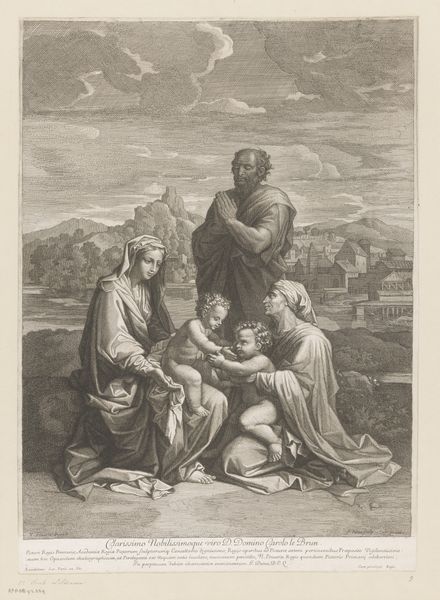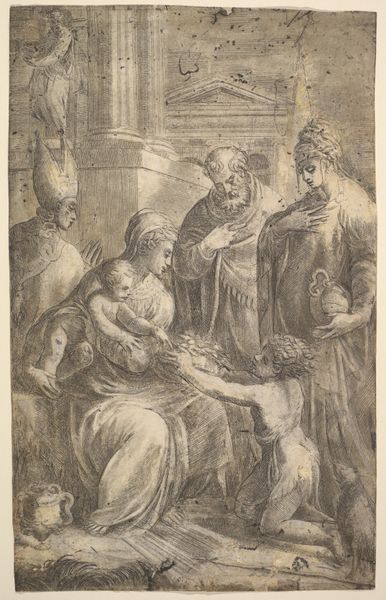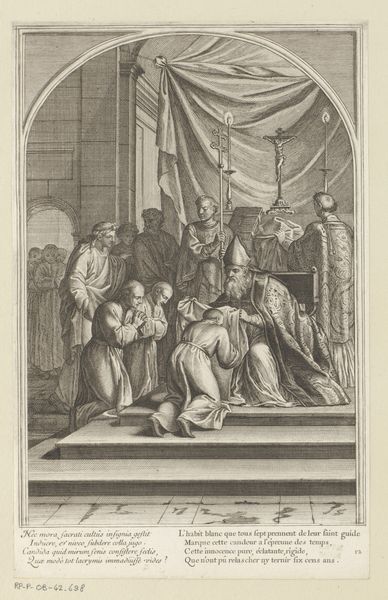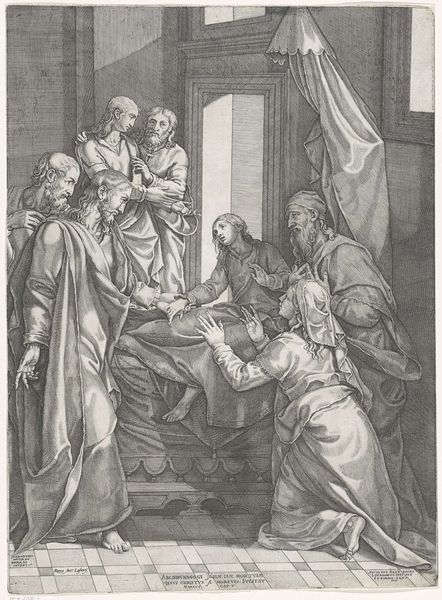
drawing, print, engraving
#
portrait
#
drawing
#
narrative-art
# print
#
figuration
#
portrait drawing
#
italian-renaissance
#
engraving
#
virgin-mary
#
angel
Dimensions: 10 1/16 x 8 1/2 in. (25.6 x 21.6 cm)
Copyright: Public Domain
Curator: Before us is Marcantonio Raimondi’s engraving "The Virgin of the Fish," dating from approximately 1495 to 1555. It's currently held at the Metropolitan Museum of Art. Editor: It’s stark, isn’t it? The linear quality creates such defined forms, and yet the expressions on everyone’s faces have this serene, almost detached quality. It's a small print, but the detail pulls you right in. Curator: Absolutely. Raimondi was a master of engraving, and this piece demonstrates how printmaking served a vital function in disseminating artistic ideas throughout Renaissance Europe. This engraving reproduces a painting by Raphael, making his composition accessible to a wider audience beyond those who could travel to see the original. Editor: The lines do feel very precise and controlled—like Raphael's design is translated through a particular skill. Did Raimondi collaborate closely with the workshop? I am curious about the relationship between painter, engraver, and the business of reproduction. What about the paper itself, I wonder about the origin of its making and trading through that time? Curator: We know he admired Raphael, and his engravings played a crucial role in establishing Raphael’s reputation beyond Italy. His workshop certainly had its process and material. But remember, the commercial aspect was central. Prints were relatively affordable, creating a market that fueled further artistic production. The virgin here feels relatable. Not as high society but a humble, nurturing vision. Editor: Agreed. Look how Raimondi rendered fabric—the fall of the Virgin's garments, the angel's draped sleeve. The way the cross-hatching suggests depth and form… It emphasizes the tactile nature of these materials and how the social context influences material interpretation and reception, influencing the perception of not only Mary and Christ, but also of the patrons themselves. Even that seemingly simple fish takes on new resonance. Curator: Indeed, the fish symbolizes Christ. Raimondi’s engraving makes visible the visual language through which religious ideologies were disseminated and reinforced, shaping popular belief through the image of divinity. The fish being handed over establishes Christ and the beginning of his sacrifice for his people. It also provides new insight as to how women’s roles were seen, as vessels through which important stories such as this began. Editor: I am not sure I align on a sacrifice. I am sure in other forms that may exist, but here it simply signifies a symbolic material. And how materials in our time and culture mean more than we are willing to say at times. This reminds me to continue to reflect on that aspect as it shifts through culture. Curator: It is truly remarkable how the history, material production, and cultural symbolism intertwine within this relatively small print. Editor: Yes, the engraving makes us rethink not only Raphael but the mechanics and historical-cultural interpretations it represents. It challenges what art and craft production meant at this crucial stage of their intertwined making.
Comments
No comments
Be the first to comment and join the conversation on the ultimate creative platform.

